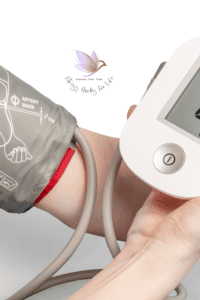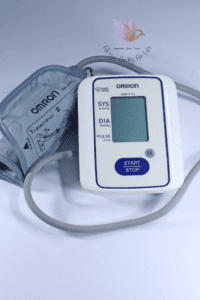
Box Breathing Or Square Breathing
Box breathing, also known as square breathing, is a simple and effective deep breathing technique that can help reduce stress,
Best breathing techniques to control blood pressure
More than half of all grownups in the United States deal with hypertension, sometimes known as high blood pressure. When readings from two separate measurements show that your blood pressure is persistently above 130 over 80, you have high blood pressure. When blood pressure becomes too high, the damage is done to the blood vessel walls. It makes your heart work harder and weakens the inner lining of your arteries, both of which may cause serious health problems or even death.
Lifestyle choices, family history, genetics, and preexisting diseases all have a role in raising blood pressure.
You’ll be relieved to know that a few easy adjustments to your routine may help you significantly lower your statistics. Research published in the Journal of the American Heart Association suggests that regular breathing exercises—even if just for five minutes a day, six days a week—can help lower blood pressure. Experiment participants saw the same benefits from strength training their breathing muscles as they would have from walking 30 minutes per day or taking blood pressure medication. As an alternative to medicine, many people try to control their blood pressure by changing their breathing patterns.
The involuntary nervous system is calmed by breathing exercises, which in turn aids in regulating the heart rate and other physical processes. To reduce blood pressure and enhance health, this manual provides different breathing methods.
Reducing blood pressure quickly and efficiently may be done using the 4-7-8 breathing exercises. Less than two minutes is all that’s needed, and you may do it whenever you choose. Get started by doing these basic things:
Do a deep exhale and count to four as you inhale through your nose.
For the count of seven, please do not breathe.
Hold your breath while you count to eight and exhale completely through your mouth.
The method should be repeated three or four times in succession.
Here are some ways to improve your workout experience and get better results:

Work up to four, seven, and eight seconds if you struggle with these timings. Consider using 2, 3, and 4 seconds to begin with. The key is to exhale for twice as long as you inhale.
Keep your tongue’s tip tucked beneath your upper front teeth for the duration of the workout. Having your tongue in the right position can help you breathe easier.
Make a soft whooshing sound as you exhale through your lips to ensure you are breathing at a steady rate.
Make sure to do this at least twice a day. In fact, the more often, the better!
Following a few months of regular practice, you should be able to increase the number of breaths you hold between each repetition to eight. If you feel dizzy, stop what you’re doing and rest.
Sama Vritti, often known as “equal breathing,” emphasizes regular, even breathing. The purpose of this routine is to let you relax while also strengthening your body. This kind of breathing has been shown to have a relaxing impact, lower stress levels, and decrease the heart rate, all of which contribute to more stable blood pressure.
There is no set time or place for this exercise; you may do it whenever you choose. Since insomnia, sleep apnea, and a lack of sleep may all contribute to hypertension, this is a great way to wind down before bed.
Sama Vritti doesn’t need any special equipment and simply takes a few minutes to complete. So, here’s what you do:
Relax in a calm, soothing environment. You should close your eyes and let your whole body unwind.
Do a deep nostril breath in and count to four as you relax.
Please hold your breath until the count of four is reached.
To the count of four, let out a deep breath through your lips.
Wait for four counts without breathing before beginning again.
The optimal frequency for this breathing exercise is between twice and six times daily.
If you’re having trouble keeping your breath, try counting for just two or three seconds. The trick is to keep everything in balance.
Fill your lungs to capacity and relax. Keep your chest from moving around too much.
As your Sama Vritti practice develops, you’ll be able to extend the time you spend doing it to a full 10 minutes.
Here are some things to keep in mind to help you get the most out of your equal breathing exercise:
Take six slow, deep breaths within 30 seconds, and your blood pressure will drop dramatically, says the Japanese Society of Hypertension. In only 30 seconds, you may reduce tension and feel more relaxed by practicing deep breathing. Basically, all that has to be done is:
To relax, shut your eyes, and take six slow, deep breaths, you should set a timer for 30 seconds. Take a few deep breaths, in through the nose and out the mouth. Take around five seconds for each inhale and exhale.
Here are some pointers to help you become an expert in this method:
Take care to slow your breathing down. It’s possible to take five seconds to breathe deeply and calmly.
Keep your back straight to avoid squeezing your chest when you breathe.
For optimal relaxation, you should do this exercise many times a day.
For lowering blood pressure, diaphragmatic breathing is another common technique. The diaphragm, the breathing support muscle located below the lungs, is the primary target of this exercise. By training your breathing to be more diaphragmatic, you may increase the amount of oxygen you take into your body. In addition to lowering blood pressure, it also helps keep blood flow steady. To breathe using your diaphragm, do as follows:
Bend your knees and lay on your back with your legs extended. Prop your neck up with a cushion to be parallel to the rest of your spine.
One hand should be placed on the chest, and the other just below the rib cage, to assist you in becoming more aware of your breathing.
Take a few deep breaths in through your nose and picture the air filling your torso. Ensure you’re extending your diaphragm properly by raising the hand below your ribcage while keeping the hand on your chest steady.
Open your mouth and gently let out your breath. Your hand should drop lightly below your ribcage.
Do this for around five to ten minutes three to four times a day.
Use these strategies to make this task easier and more convenient:
Raising your blood pressure might be as simple as breathing more deeply and more often through your diaphragm. For added difficulty and results, try doing this with a book on your stomach.
Once you’ve mastered the laying down version of the exercise, do it while seated or standing.
Nearly half of all individuals will have some degree of hypertension.
Altering one’s way of life may profoundly affect one’s health. Other than regular breathing exercises, you may also attempt the following to bring down your blood pressure:
Do not resume smoking
Control your alcohol intake.
Reduce your caffeine intake.
Regular exercise
You should lose weight.
Eat more nutritious foods.
Calm your nerves

Get as much rest as possible.
The articles on Fitnesshacksforlife.org website is provided for reference purposes only, A public resource you can use for free. You should not take them as the sole source of medical direction. Fitnesshacksforlife.org does not accept payments or incentives from any of the individuals or organizations named in the articles, and the articles are not an endorsement of those parties or their products or practices. Do not ever disregard professional psychological or medical advice nor delay in any manner seeking professional advice or treatment because of something you have read on our site or social media. Fitness Hacks For Life is a registered 501(c)(3) non-profit organization, eligible to receive donations under the laws of the United States of America.

Box breathing, also known as square breathing, is a simple and effective deep breathing technique that can help reduce stress,

A Mindset is the collection of attitudes and beliefs we have about ourselves. It is our view of ourselves and

It’s simple to act nicely at the start of a personal or professional relationship when everything appears ideal. However, the
If you feel suicidal, call or text the helpline: 988

Agreed Declined